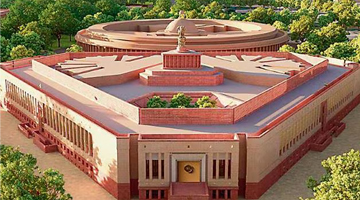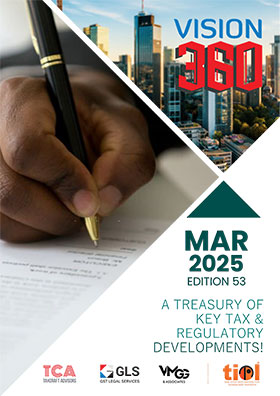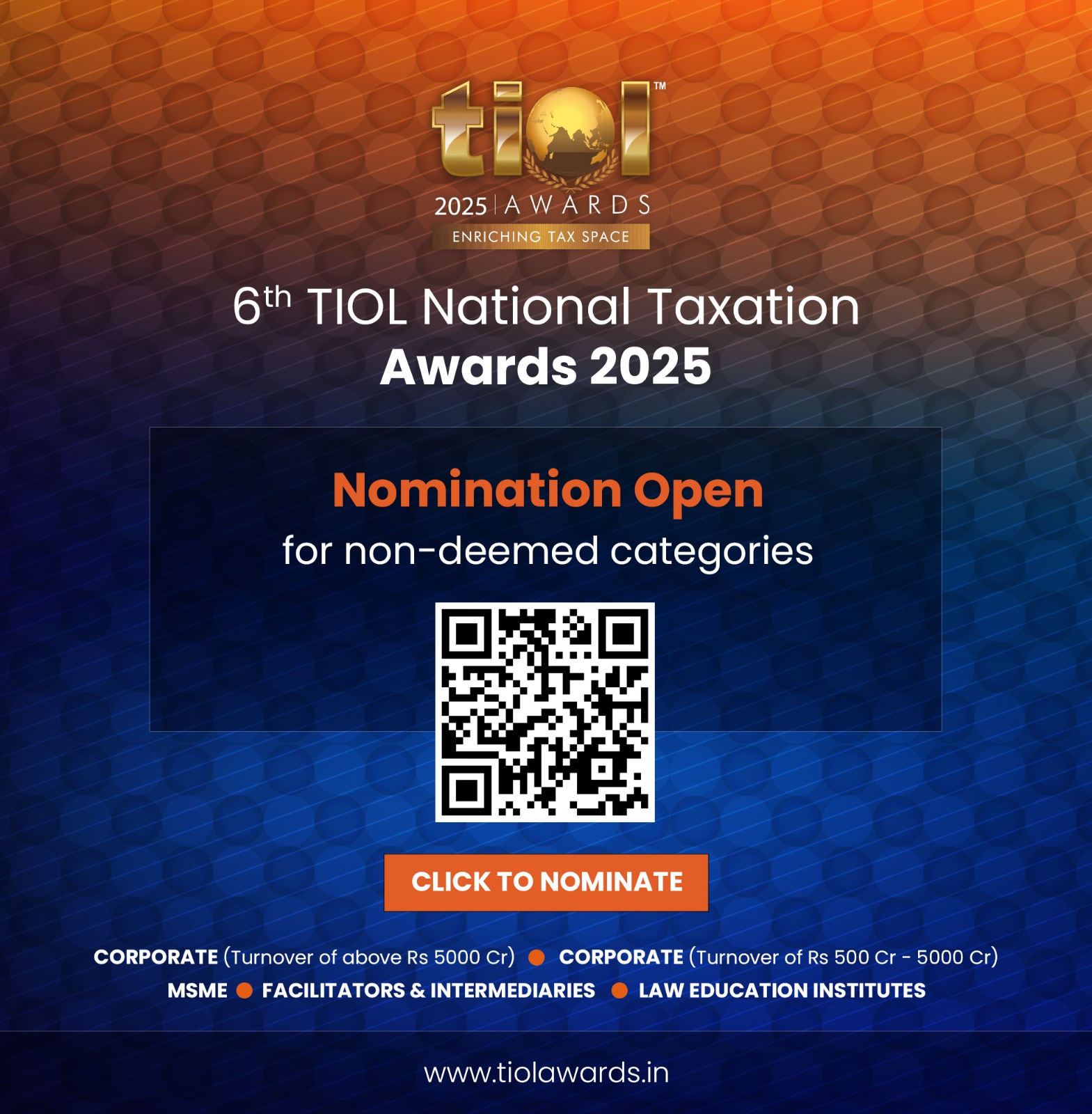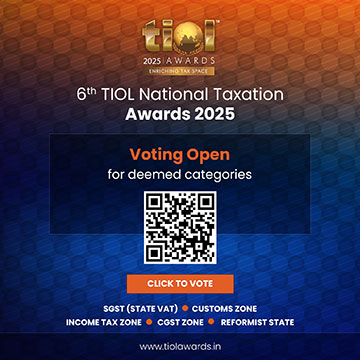Non-adversarial Tax Administration
JUNE 08, 2015
By M K Gupta, IRS (Retd)
MR P Chidambaram, the then Finance Minister, in August 2012 had stated that Government of India is committed to a stable tax regime, moderate tax rates, non-adversarial tax administration and a fair mechanism for dispute resolution. In January 2014 the current Prime Minister while addressing members of FICCI described the adversarial approach adopted by tax administration in these words 'The tax terrorism prevailing in the country is dangerous. One can't run the government by thinking that everyone is a thief'. The present Finance Minister, Mr Arun Jaitley has on many occasions has assured that the government would restore the credibility of decision-making, while easing processes and making the country's tax structure non-adversarial.
2. At last CBEC vide letter F.No.275/17/2015-CX.8A Dated: March 11, 2015 has taken steps to improve indirect tax administration by directing the field formations to ensure issuance of legally valid show cause notices and to pass quality adjudication orders which can stand the test of legal scrutiny. Thanks God! The department has realized that invalid show cause notices are being issued and adjudication orders are of poor quality . The adjudication process of the departmental authorities has been commented by the President of CESTAT in his speech at FAPCCI, Hyderabad on January 17. In Tribunal about a hundred thousand cases involving about Rs. 2.47 lakh crore are pending. The success rate of the departmental adjudication is about15%. He concluded "that something is pathologically, terminally and seriously wrong with our departmental adjudication". He has assigned two reasons; first thinking on the part of the adjudicating authority that he was a tax collector and, second every assessee was looked upon with suspicion.
3. Of late it is seen the Tribunal has started imposing costs on the department. Few cases are cited below:
(a) M/s. Ultratech Cement Ltd. v. Commissioner of Central Excise, Rohtak - 2014-TIOL-1934-CESTAT-DEL
"14. Since the impugned order as analyzed by us in detail earlier, records conclusions without any analysis of the pleadings and the evidence on record, we consider it appropriate to impose costs of Rs. 2,500/- (Rupees Two Thousand Five Hundred), to be remitted by Revenue to the credit of the assessee, within 30 days from today.
15. We are also constrained to observe that adjudication and drafting of adjudication orders requires training; and incompetent departmental adjudication ill serves the interests of the State. Apart from accentuating the appellate docket load, such casual orders contribute to faith deficit in the process of departmental education and imperils the due process of law. The appropriate authorities may consider this pathology writ large in departmental adjudication. For this purpose, we direct that a copy of this judgment be marked to the Board of Central Excise and Customs and to the Secretary (Revenue), Ministry of Finance, Department of Revenue, for consideration."
(b) SUNIL SPONGE PVT. LTD.Versus COMMISSIONER OF C. EX.& S.T., RAIPUR
"Since Commissioner (Appeals) has not followed the law declared by the Larger Bench, we deem it fit to impose an exemplary cost of Rs. 2500/- for burdening the appellant for unnecessary litigation costs, for burdening the Tribunal as also for showing scant respect for the law declared by the higher authorities. The cost is required to be paid to the Registry of the Tribunal within a period of 3 months from the date of receipt of the order."
(c) RGL CONVERTERS Versus COMMISSIONER OF CENTRAL EXCISE, DELHI-I: 2014-TIOL-2305-CESTAT-DEL
"15. In the circumstances and since the authorities below have adjudicated against the assessee, despite and clearly contrary to the binding precedent and thereby subjected the assessee to an avoidable litigative trauma and the accompanying expenditure, we allow the appeal with costs of Rs. 10,000/- payable by Revenue to the appellant-assessee within one month from the date of receipt of this order."
4. The above clearly indicates that commitments of the government for providing non- adversarial tax administration and a fair mechanism for dispute resolution insofar as indirect tax department is concerned have not been fulfilled. This is evident from the facts that the huge amount of revenue is shown as arrears over the years whereas recovery is minuscule and a large number of cases are pending in call book involving huge revenue. This has created lot of uncertainty among the taxpayers.
5. One must examine the reasons for issuance of Show causes Notices.
6. The department maintains Call Book where the SCN's are kept pending. The disposal and pendency of call book cases is as below. It shows that about 7000-8000 cases are transferred to call book every year. The reasons for keeping the cases have been detailed in the CAG Report.
| |
2011-12
|
2012-13
|
2013-14
|
2014-15(up to Nov)
|
|
No. of cases disposed
|
5654
|
6494
|
4579
|
4196
|
|
total pendency
|
31587
|
33890
|
37113
|
36851
|
Source. Data Management Web site - Key Result Areas)
As per CAG Report No 8 of 2014(Indirect Taxes-Central Excise), the pendency of call book cases as on 31.03.2012 was 24081 involving revenue of Rs. 46,727.46 crore and it increased to 29115 cases involving revenue of Rs. 53521.86 crore as on 31.03-2013. There is substantial difference in number of cases pending as per the CAG report and as mentioned above. About 12000 cases were pending for more than two years. The reasons for pendency were as below:
|
No of Cases
|
Reason for Pendency
|
|
20594
|
Department has gone in appeal to appropriate authority
|
|
6097
|
Audit objection contested
|
|
1518
|
Injunction issued by Courts/ Tribunal
|
|
776
|
Board has ordered to keep in call book
|
|
130
|
Other reasons
|
7. The above gives a fair idea why SCNs are issued. Most important reason is that the department has gone in appeal to appropriate authority. Department goes in appeal to SC against the Tribunal order (relating to rate of duty and valuation) and High Court order. This decision is taken by CBEC. Department goes in appeal to High Court if the Tribunal order relating to other issues is against the department. This decision is taken by the Commissioner. Department goes in appeal against the Commissioner's order. This decision is taken by Committee of Chief Commissioners. Against Commissioner (Appeal)'s order a committee of two Commissioners takes decision to file appeal before Tribunal. The orders passed by officers sub-ordinate to Commissioner are reviewed by him and if not accepted appeals are filed before the Commissioner (Appeal). In such contingencies when the SCN is issued the main reason is that the department has not accepted the order. It is common knowledge that the success rate of the department appeals before Courts/Tribunal is around 5-10%. One can safely say for such adversarial tax administration that the CBEC and other top officials of the department are responsible.
8. Second important reason for issuance of SCN is that audit objection raised by CERA is contested. In the SCN issued, the reason is stated to be objection raised by CERA. The audit objection at DAP stage is to be examined by the CBEC; in the field at the level of Commissioner, if it is not DAP stage. Audit objections are primarily based on certain circulars issued by the Board which are questioned by the audit or on the basis of legal interpretation given by the Appellate Authorities or at times different interpretation of legal provisions adopted by the audit.
9. Apart from the above reasons, SCNs are issued on the basis of objections raised by the internal audit. The audit objections raised by Internal Audit are discussed monthly in a Committee headed by the jurisdictional Commissioner. Invariably this committee within an hour or so accepts almost all the objections and directs to take appropriate action to recover revenue by issuing notices. As per the information given in Key Result Areas more than 50000 audit objections are raised by the internal audit. One may not be surprised if 10000 SCN's in a year are issued on this basis. The reasons stated in SCN are audit objections. When the cases are taken up for adjudication at the appropriate level, the decision of Committee prevails.The other reason for issue of SCN is investigation conducted by the preventive parties. About 4000 cases are booked every year as per the Key Result Areas. During investigation emphasis is mainly given to the statements recorded. It takes months and years to complete the investigations. The officers, in the meantime, get transferred. Not much attention is paid to the documentary evidence. Invariably SCNs are issued without analyzing the legal position. During initial period of investigation, much attention is given to get the money pre-deposited.
10. From the above, it emerges that the main reasons for issuance of Show Cause Notices are Internal audit objections, CERA audit objections, investigation and further litigation. If the proper and judicious approach is adopted at this stage Tax Terrorism or adversarial tax administration can be controlled. The arrears of revenue in excise cases pending realization runs in to more than Rs. 60000 crore where as the realization is around Rs. 1000-1500 crore which would include pre-deposits ordered by Court/ Appellate authorities.
11. The key Result Areas essentially reflect the efforts made by the Commissioners and their staff for augmenting the revenue which otherwise would have not accrued in the normal course, without special efforts made by the officers. The total extra collection due to these efforts is around Rs. 4000 Crore every year. Finally, it may be less than that as no one knows how much has been refunded after adjudication/ Appeal process.
12. It is not fair to put the entire blame on the officers for poor quality of SCN and adjudication. The blame lies with the institution which firmly follows Play Safe Policy. This policy is the root cause of prevailing uncertainty in the tax administration. Perhaps Topis the biggest player.
13. Some of the suggestion to end adversarial tax administration or tax terrorism -
(i) Certainty is hallmark of any tax administration as propounded by Adam Smith. Tax laws should be addressed to an honest taxpayer. Laws should be in simple language so that a taxpayer can understand them without the assistance of a tax expert. Laws should be followed by issuing detailed guidelines covering all the aspects and interpretation. The issuance of guidelines is adopted in most of the tax administrations worldwide. CBEC has also made an attempt by issuing Education Guide when Negative List was introduced. This will make the self-assessment and voluntary compliance meaningful.
(ii) The adjudication function and appellate jurisdiction of the departmental officers should be vested in independent bodies within the department.The directive principles laid down in the Constitution envisage that the judicial functions should be separated from executive function. A step was taken in this direction by constituting Appellate Tribunal which stripped CBEC and Government of India (to a great extent) of quasi- judicial functions in relation to indirect taxes.
(iii) Investigation/ audit must be completed within three months. There should be no pressure for any pre-deposit. Capacity to detect non-compliance of the officers shall be enhanced. When investigation/audit are undertaken by the department, it should send a message to the taxpayer community that the department has all the means to detect any non- compliance.
(iv) Arrest provisions should be scrapped. If there is evasion, prosecution must be filed without fail.
(iv) Apex intelligence agencies role should be confined to collection of intelligence, undertaking research of possible tax violations and to suggest remedial measures. An audit should be conducted of the investigations undertaken by these agencies during the last 10 years.
(v) Administrative arrangements shall be made to ensure appeals before Tribunal are decided within a period of three months.
(vi) A large number of cases are pending before the Courts/ Tribunal for years together for no fault of tax payer. In such cases provisions should be made that no interest would be charged for the time taken in disposal of cases. Besides, provisions should be made that no interest would be charged in respect of cases kept in the call book.
(vii) All the circulars issued by the Board should be reviewed to examine their legality keeping in view the decisions given by Courts/Tribunal.
(viii) Conflicting decisions given by the Courts/ Tribunals should be analyzed. The final decision should be taken by the CBEC so that there is no uncertainty in the field.
14. It must be appreciated that several structural reforms undertaken in the tax matters since 1991 have resulted in better tax collection and reducing the disputes. Still, uncertainty prevails due to lack of clarity perhaps more on the part of revenue. In a world where things are rapidly changing due to social media, broadband, data analysis and cloud computing, expectations are very high. There is need to use these tools by the revenue to provide a stable and certain tax regime to the country.
|
( DISCLAIMER : The views expressed are strictly of the author and Taxindiaonline.com doesn't necessarily subscribe to the same. Taxindiaonline.com Pvt. Ltd. is not responsible or liable for any loss or damage caused to anyone due to any interpretation, error, omission in the articles being hosted on the sites)
|















